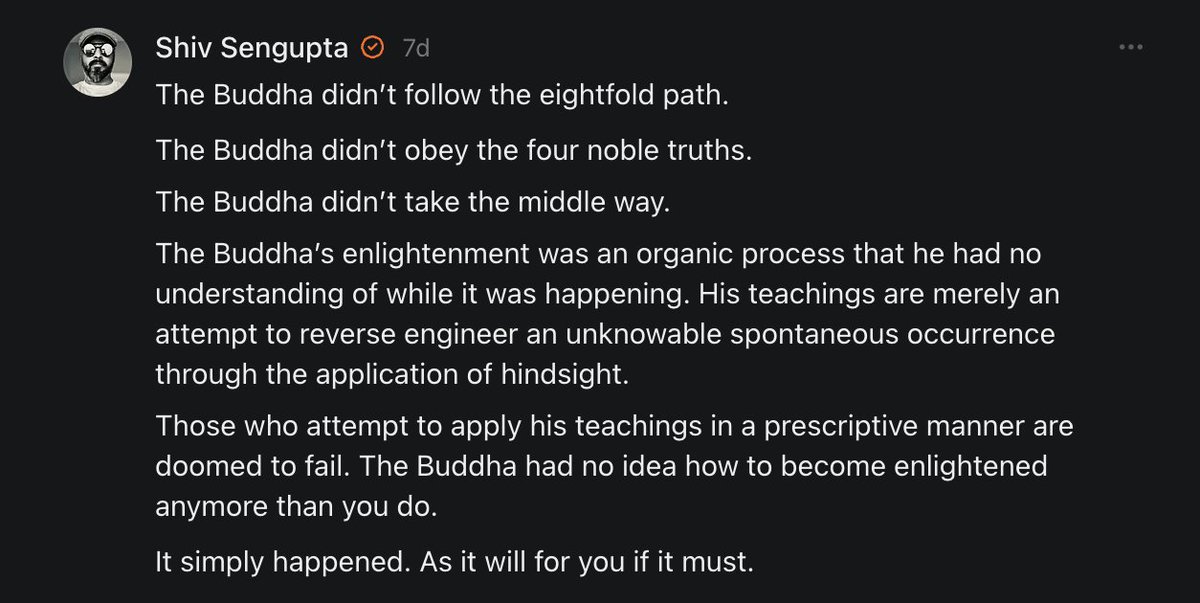from the not-twitter https://t.co/2nQvWN9xWB
No one knows precisely when this took place, but if Chih-yi’s classification of the Buddha’s sutras is correct, it would have been within ten years of 400 B.C., or within a decade either way of when the Buddha was sixty-five. It was during this period that the Buddha began teaching a teaching that cut through all other teachings, including his own,
... See moreRed Pine • The Diamond Sutra: The Perfection of Wisdom
Over the next several days, the truth emerged to Siddhartha—that release from suffering comes not from renunciation of the things of the world, but from release from attachment to those things. A Middle Way shunned both ascetic extremism and sensuous indulgence, because both are attachments and thus lead to dissatisfaction. At the moment of this re
... See moreArthur C. Brooks • From Strength to Strength
the Buddha pointed to the freedom beyond the self. “In the seen, there is just the seen; in the heard, there is just the heard; in the sensed, there is just the sensed; in the thought, there is just the thought.”
Jack Kornfield • The Wise Heart: Buddhist Psychology for the West
Suffering alone exists, none who suffer; The deed there is, but no doer thereof; Nirvana is, but no one seeking it; The Path there is, but none who travel it. (16)
Alan Watts • The Way of Zen
When Buddha practiced prescriptions, he did not reach his goal. As he himself proclaimed that he had eaten one grain of rice per day and drank his own urine and meditated for years and was no closer to wisdom than he was when he left his father’s house. But he did not achieve Enlightenment solely because he left the prescriptions. He achieved Enlig
... See more